
Picture this scene: A toddler is trailed by his mom and dad as he plays in the gardens of an iconic art museum in Paris. The three of them are on the grass behind a spectacular ultra-contemporary museum that, according to ArchDaily, catalyzed “innovation in digital design and construction” while “evoking the tradition of 19th-century glass garden buildings.” As he walks, the dad notices several signs in French with the words Jardin d'acclimatation, but doesn’t pay too much attention. Later, back at the hotel, he googles the name, and discovers a shocking truth: less than 80 years ago, that site was a human zoo.
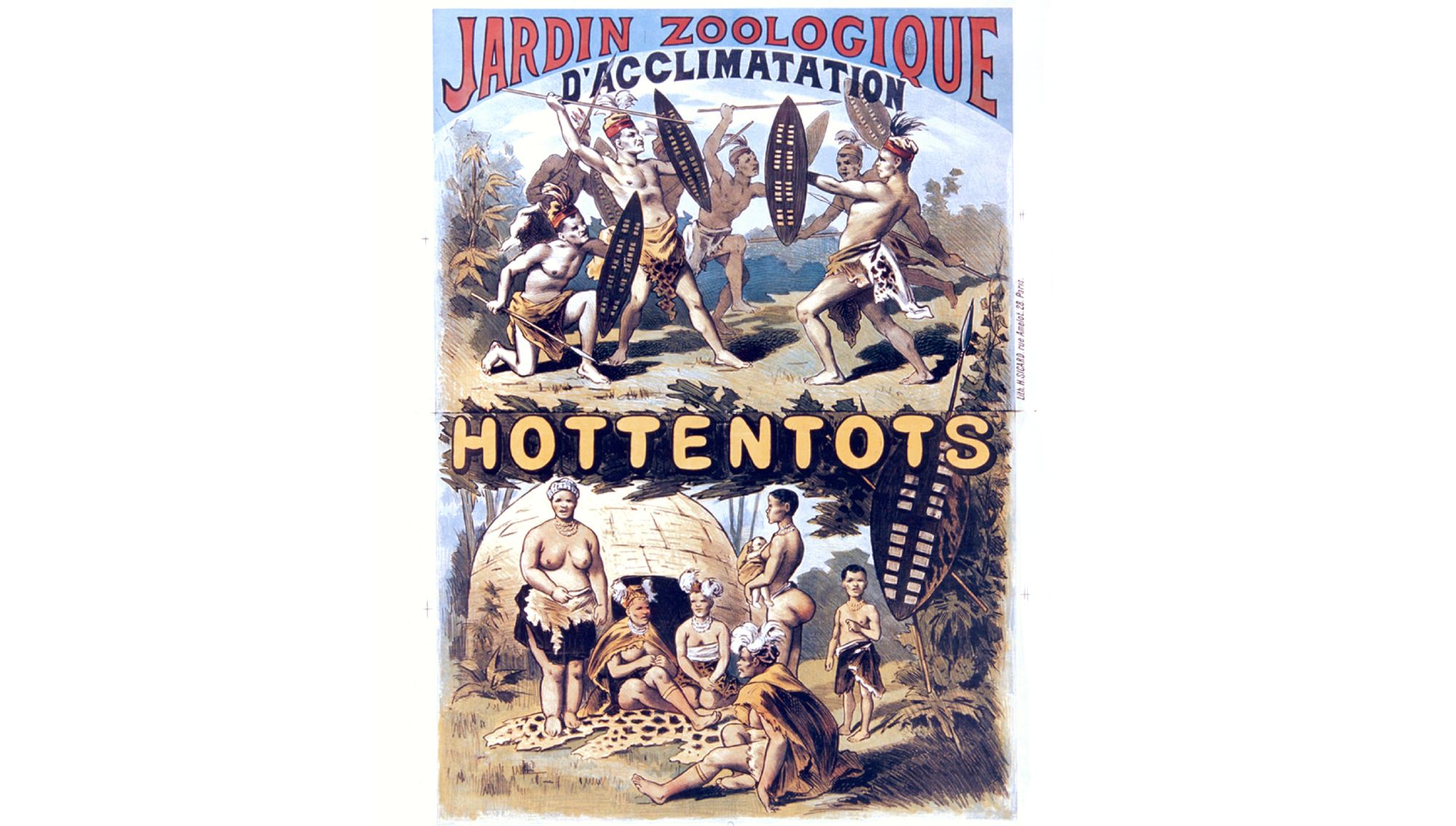
The toddler is the son of South African artist Lawrence Lemaoana. He is remembering this incident from 2017, as we chat over Skype about some of his most vivid experiences in the art world—those that unintentionally allowed him to peel back the glossy veneer to discover what lay beneath. Lemaoana, who works mostly in textiles, had been in Paris for a group exhibition of South African artists at the recently inaugurated and much celebrated Louis Vuitton Foundation.
He was part of Being There: South Africa, a contemporary scene, an exhibition that brought together generations of South African artists from the 1970s to the present. The artists were flown in style, put up at lush hotels and given full access to the museum. It was during one of his walks that Lemaoana and his family stumbled upon a small white marble plaque hidden in the grass.
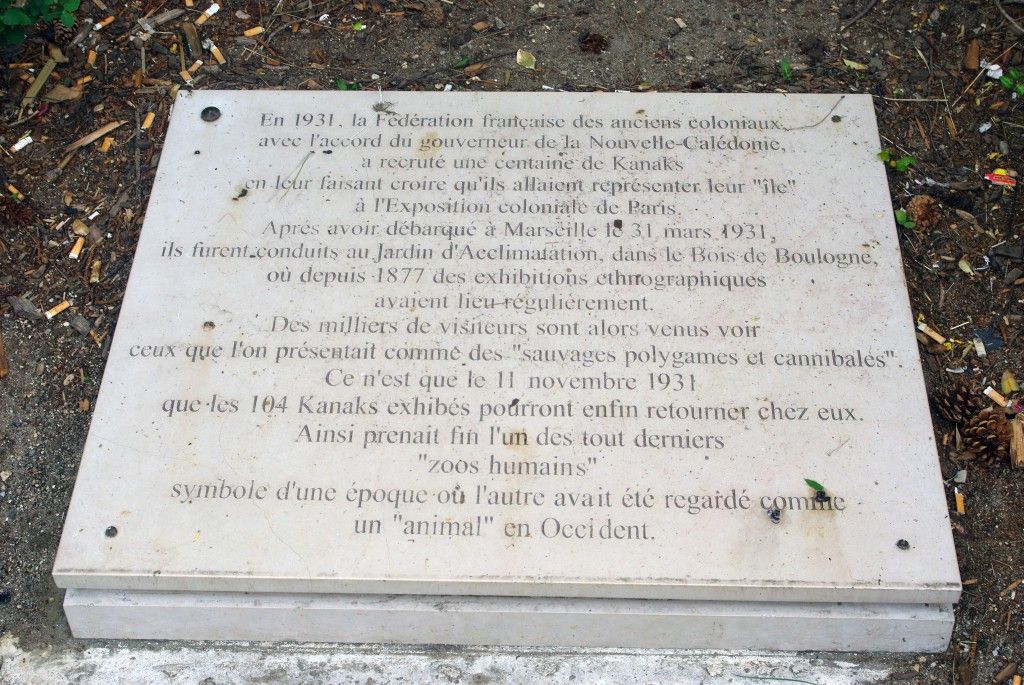
It stated that in March 1931, the French government recruited 104 Kanaks from the archipelago of New Caledonia—which still remains a French overseas territory—by making them believe that they were going to “represent their island” at the Colonial Exhibition in Paris. After disembarking in Marseilles, the Kanaks were taken to the Jardin d'acclimatation, a large garden created in 1860 to acclimate plants and animals from the colonies, and that also regularly held so-called “ethnographic exhibitions.” Eight long months passed before the Kanaks were allowed to return home.
According to the French magazine Telérama, between 1877 and 1937, millions of Parisians flocked to see Nubian, Senegalese, Kalina, Fuegian, Sámis, Kanak and other peoples—men, women, and children barbarically caged behind bars in a spectacle of racism—many of whom died and were buried in the zoo’s cemetery, together with the animals. Human zoos were not only popular in France, but throughout Europe, North America and beyond. From the 1800s to as late as the second half of the 20th century, 35,000 individuals were exhibited in this way, attracting nearly a billion and a half curious visitors from Germany, the United States of America, Great Britain and even Japan.
Peddling in Culture, Peddling in the Exotic
Understandably, this discovery made Lemaoana feel uneasy. “For me, it was this weird experience of like: here I am putting material to be seen and experienced; basically the channels are kind of the same,” he says. “We’re still peddling in culture; we’re peddling in the exotic. It’s just that now we get business class tickets and fancy hotels.”
What made the experience even more troublesome was being back inside the museum for group photos with other artists in the exhibition, and being asked to stand in front of his artworks. It all felt uncomfortable now that he was aware of the history of the land that forms part of the museum’s property. “For me, it was really strange and surreal that here we are doing these things in a similar kind of fashion,” he said. “Almost like a reincarnation or replay of similar kinds of elements.”
“[In French art institutions] there’s always an African season, an Asian season. So again, it’s almost like bringing the exotic ‘other’ into the space to display, to be seen, to be consumed, and then we go back to our countries.”–South African artist Lawrence Lemoan
Lemaoana notes how, interestingly, in France, such engagement with the “other” comes and goes, similar to the fashion trends. “There’s always an African season, an Asian season. So again, it’s almost like bringing the exotic ‘other’ into the space to display, to be seen, to be consumed, and then we go back to our countries.” Indeed, that Spring and Summer, the Louis Vuitton Foundation had devoted the entirety of its display areas, as well as a full multidisciplinary programme, to the subject of “Africa.” Next to Lemaoana’s group, there was a second group exhibition titled The Insiders, showcasing “a selection of artists living and working in sub-Saharan Africa.”
Lemaoana was in the company of established African artists like Kenyan artist Wangechi Mutu, who made history in 2019 when she was commissioned by The Metropolitan Museum of Art in New York, U.S.A., to create four bronze sculptures of African women collectively titled The NewOnes, will free Us. The four bronze sculptures were the first works of art to fill the niches of the museum’s Fifth Avenue façade since the building was completed in 1902. Other well-established artists in the show were Malick Sidibé, Jane Alexander, David Koloane and Bodys Isek Kingelez—the latter whose retrospective City Dreams was presented at New York’s Museum of Modern Art in 2018. It is interesting to look at the exhibition in retrospect and observe how vast the output and influence of some of these artists in the group exhibition were. One can even argue that some of them are deserving of their own solo spaces at the museum.
The building of the Louis Vuitton Foundation, once described by a journalist as “a mess of white blotches,” was erected in 2014 at the North of the posh Parisian gardens of the Bois de Boulogne. Its designer is the renowned architect Frank Gehry, who in an interview cites Marcel Proust’s Remembrance of Things Past as a key inspiration for the project. It is ironic that this seven-volume novel focuses on the loss of time and lack of meaning in the world. However, when asked if the history of the site had influenced the building’s design, Gehry merely explained that the permissible height for construction (i.e. not to exceed the original structure’s height) was that of an existing bowling alley—leaving out the fact that, according to historian Pascal Blanchard, this exact same area once captured caged Fuegians of Patagonia in 1881.
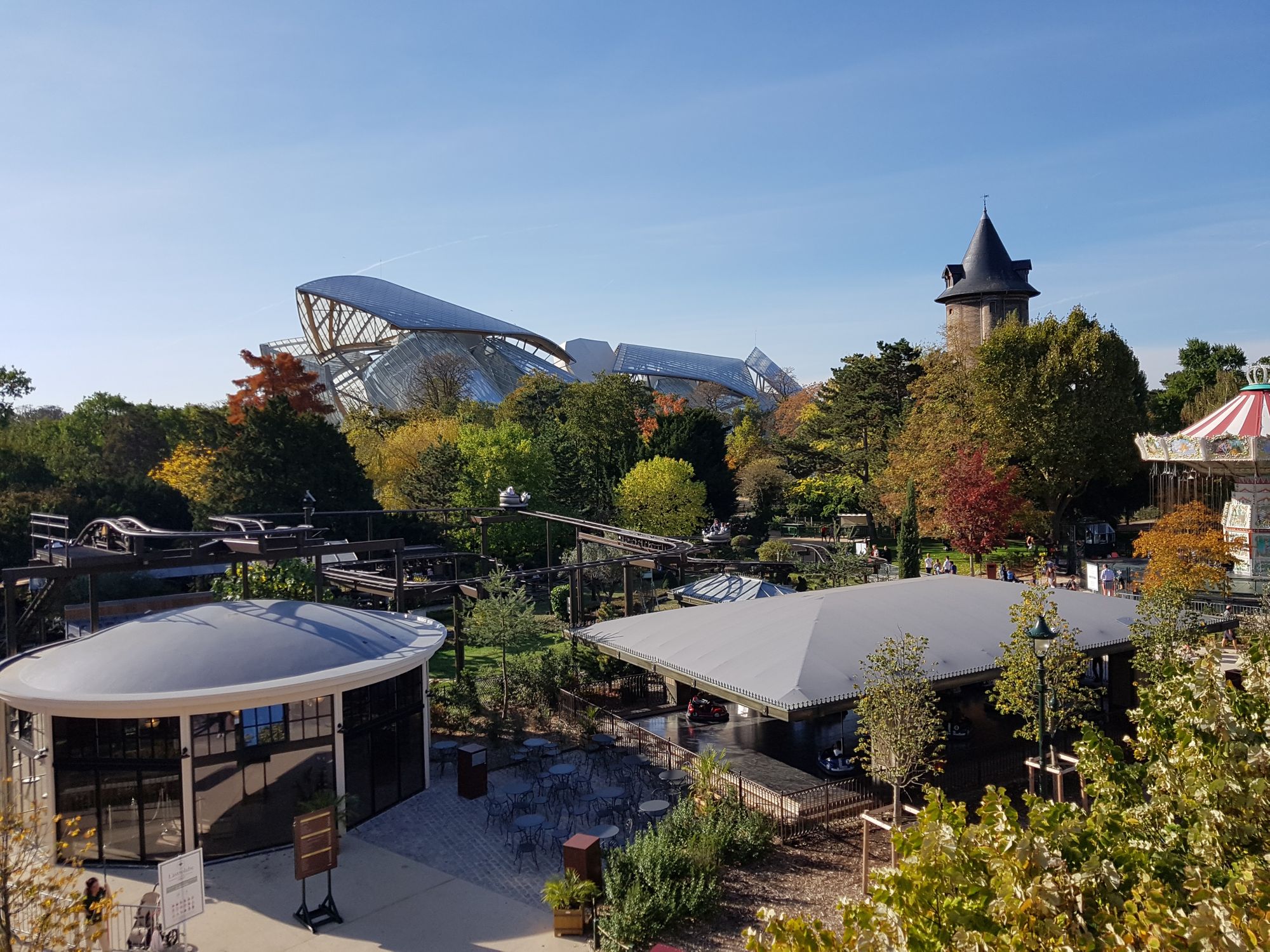
Who is Lawrence Lemaoana?
It is fitting that the trip to Paris occupies a large part of our first Skype call, as it combines the artist’s two passions: his family, and his continued uneasy relationship with the art world.
The Johannesburg-based artist cynically problematizes the relationship between the South African media and people who consume its news. He works mainly with Kanga fabrics, which he embroiders with phrases inspired by newspaper headlines, popular lines from songs, or other popular South African phrases. Kangas are rectangular printed textiles, each with their own inscription written in the same place in every design. Sold and worn in matching pairs, kangas are mainly a woman’s garment in eastern Africa, though they are also often worn singly by men at home and by Maasai men in public. According to Social Fabric: African Textiles today: “A combination of inscription, overall design, and the ways in which a kanga may be worn make it a remarkable medium of communication.”
For example, his work We Even Stopped Believing in Prayers was inspired by a lyric from a Nina Simone song, Mississipi Goddam!, Things Fall Apart was inspired by the title of Chinua Achebe’s book, and The Word is our Shepherd was inspired by Psalm 23.
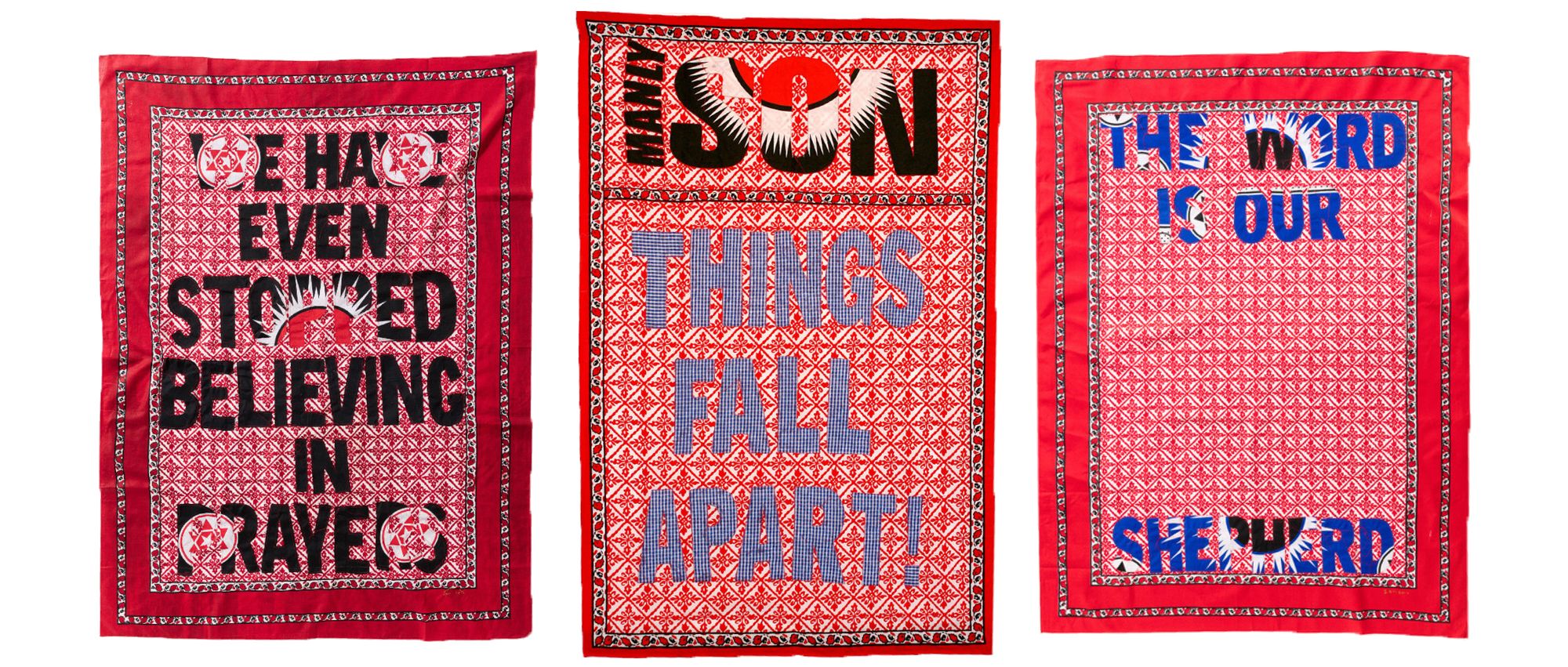
These works are part of his ongoing “Kanga Textiles” series of artwork which began in 2008, the same year that Lemaoana last held a solo show. “I went underground because I had such a bad experience with the art world and its superficial demands on me,” he explains.
In his last show, titled Fortune Telling in Black, Red and White, Lemaoana used the dancing motif of former South African president Jacob Zuma as the central focus of the work. Zuma was accused of raping the daughter of one of his friends during the struggle against apartheid, Judzon Kuzwayo. Kuzwayo and Zuma had been friends in the African National Congress, ANC, and both sentenced to 10 years imprisonment at Robben Island. Zuma met Kuzwayo’s daughter as a child in Swaziland, where her parents had gone to exile.
The rape is alleged to have taken place at Zuma’s home in Johannesburg. The woman was given the name Khwezi, during the rape trial to protect her identity as she was being harassed and given death threats by Zuma’s supporters. Zuma said during the trial that Khwezi had been wearing a kanga and he took that as an invitation to have sex with him by stating that “in Zulu culture” he had no option but to oblige. On 08 May 2006, Zuma was acquitted. But Khwezi, who was HIV positive and an activist, lived in fear of Zuma’s supporters and was eventually offered asylum in Holland after the home she shared with her mother was burned down. She died in 2016 at the age of 41.
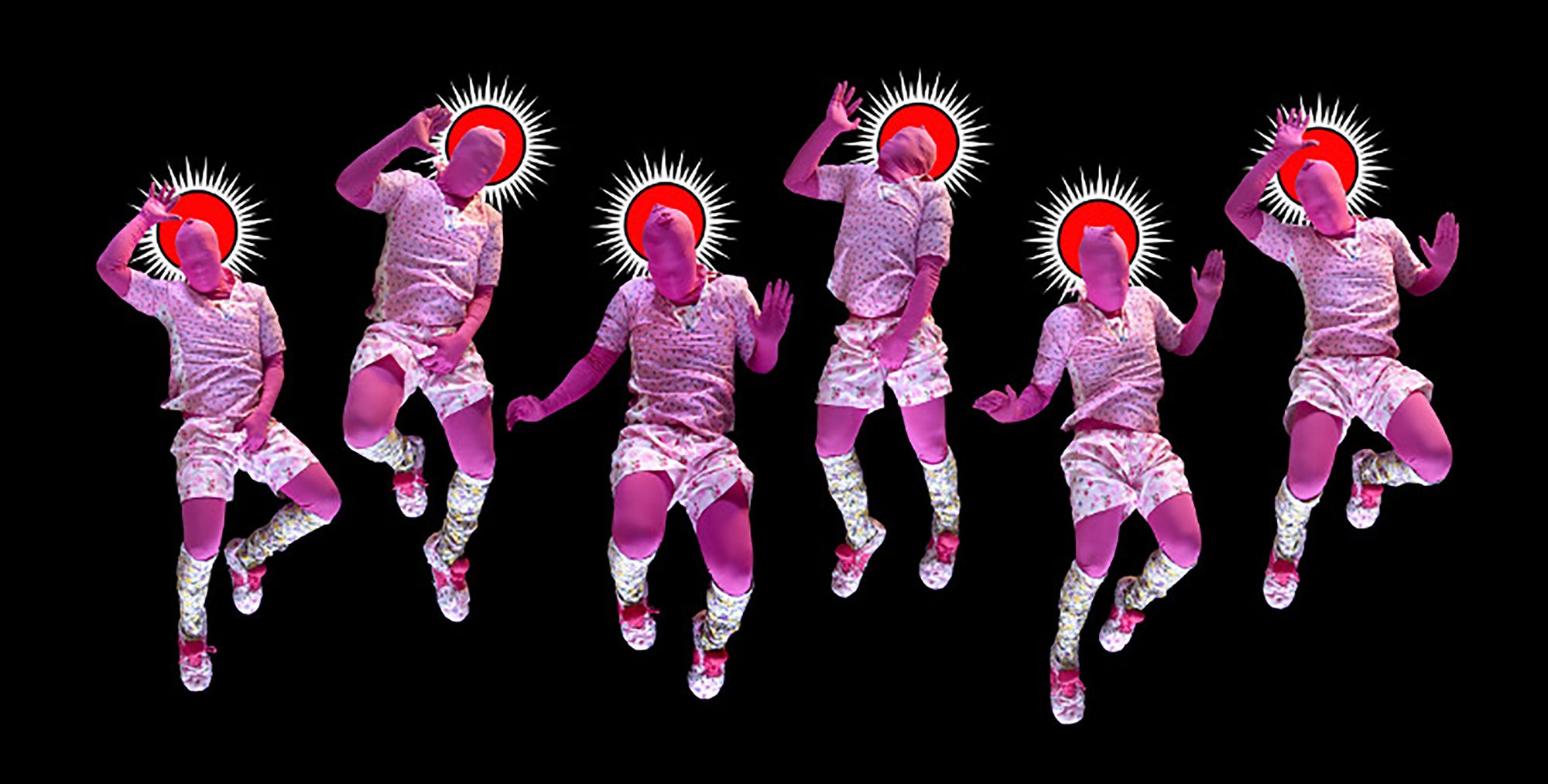
Lemaoana became fascinated with the kanga through following the news around Zuma’s rape trial in the media. “This is because Jacob Zuma, at the time, was not a controversial figure as he is right now, but a very loved figure. The media loved his being; they called him charming etc. Then of course it kind of changed with the rape trial.”
Lemaoana says that in the trial, Zuma was performing as a certain kind of Black man: “He can perform the traditional Zulu man when he’s asked to do it. But he can also perform the kind of contemporary leader that he was at the time. For me, that kind of shape-shifting was interesting. But also during the rape trial, he said Khwezi was wearing a kanga, and that signified for him: permission.” Lemaona found that interesting and connected it to the tradition of appropriation art, where you can take something and put it in a displaced area. “Jacob Zuma was doing the same thing, but using culture as his currency, and being aware that white South Africans will be ignorant of what he was doing.”
Kanga as coded message and resistance
While working on the series inspired by Jacob Zuma, Lemaoana also started researching the deep history of the kanga textile, particularly in Southern and Eastern Africa. In East Africa for example, kangas play an ambiguous role. They reflect the changing times including fashion and people’s tastes. In Social Fabric, for example, it is stated that they provide a “detailed chronology of the social, political, religious, emotional and sexual concerns of those who wear them,” giving credence to thoughts and feelings which cannot be said aloud, and thereby relieving suspicions and anxieties. While playing a central role in all the major rite-of-passage ceremonies in a woman’s life, they are also used for mundane daily wear.
Today’s kangas—with their rectangular form, continuous border, an image or pattern in the center, as well as an inscription in Kiswahili—are very different from the late 19th century ones, which were first just a few lenço or hankershifs sewn together. Later on, hand-stamped versions on a single piece of cloth replaced the sewn lenço, and eventually they started being printed in factories.
“[The Kanga is] a passive-aggressive communication device used by women, to women, but also publicly. [...] It’s kind of like a code.”–South African artist Lawrence Lemaoana
Lemaoana says that for him, the kanga speaks of things that cannot be said. “It’s a passive-aggressive communication device used by women, to women, but also publicly,” he explains. “I saw one that has a mango tree, and it has a text that says the mango trees are ripe. This is one that a woman wears when she wants to have sex with her husband. So it’s kind of like a code. And then when you look even deeper into it, the Kanga are cultural, but they’re not made in Africa and not made in these spaces. They were imports, and I was really interested in that kind of ambiguity.” Dutch companies like Vlisco are some of the biggest producers of wax print.
In Southern Africa, the most popular use of the Kanga is by traditional healers. Their colors are mostly red, black and white. Lemaoana said the different colors also represented specific meanings. He was intrigued by the fact that these same colors were the ones employed by most mass media publications in South Africa like Daily Sun, The Star and Mail & Guardian. He says: “I was intrigued by the ambiguity of this color scheme of where it performs these multiple roles.”
One of the more contemporary uses of the kanga came from artist and LGBTQ+ activist Kawira Mwirichia, whose series To Revolutionary Type Love uses the kanga to celebrate queer history from different countries around the world.
Kanga as a question about South Africa’s freedom
Although he last held a solo show in 2008, Lemaoana has continued to make work, and his artworks are collected in museums around the world through AFRONOVA GALLERY, the online gallery that represents him. In 2018, his work was part of the group exhibition Department of Non-Binaries, shown at the inaugural 2018 Fikra Graphic Design Biennial in Sharjah, UAE. In 2020, the gallery at the University of the Free State, in Bloemfontein, South Africa, staged an online show of Lemaoana’s work called Freedom is A Stone Throw Away. The show was inspired by the lyrics from Thandiswa Mazwai’s rendition of Jikijela, a song that speaks to this idea that although freedom remains elusive, we will keep fighting and “throwing stones.”
“It’s a beautiful melody. It’s political and speaks to resistance,” Lemaoana says. “Then you find out it’s a new version, and that Letta Mbuli sang the same song many years ago. It gives this image of repetition—that we are constantly throwing these stones that don’t necessarily reach their destination, because they don’t change their context.” Mbuli’s rendition was released during apartheid, while Mazwai’s song came out following the Rhodes Must Fall, and later Fees Must Fall, protests that started in South Africa and spread throughout the world.
“The kids are still fighting the system,” he says. “It also speaks to the fact that these things have been fought for and our ancestors are always warning us: the repetition happens because of powerlessness. It also happens because people sell out, and people are not what they say they are. It also has to do with how history is being told, who tells it and for what benefit.” The latter is important when he thinks about the history of the Paris museum he visited with his family, but also about why he continues to have an outsider/insider relationship with the art world.
“One of the biggest lessons of the past few years has been the realization that he [Lawrence Lemaoana] does not only have to exist in the art world as an artist, and that ‘it is possible to be a plural being in the arts.’”
“I feel like I am actually problematizing my Black maleness, and I am not advancing the needle. So, I had to find other ways of existing in the art world, and teaching took over,” he states. He adds that one of the biggest lessons of the past few years has been the realization that he does not only have to exist in the art world as an artist, and that “it is possible to be a plural being in the arts.”
It is clear that family is an important beacon helping Lemaoana navigate his uneasy relationship to the art world. Had he not been following his son around the museum, he might not have discovered the history of the human zoo. A healthy skepticism of the mass media and his curiosity about the kanga—as well as the man who used it as a scapegoat during a rape trial—means that Lemaoana will always have a foot in the art world, and therefore be part of the conversation around contemporary art practice in Africa. But it remains to be seen whether or not he participates in it beyond making work and teaching the next generations of artists. For now, the work that he has put out is more than enough to go on, as history will keep repeating itself.
More recently, Jacob Zuma is back in the news again in South Africa. This time, he handed himself over to the police in August, in compliance with the Constitutional Court judgment that formed part of the State Capture inquiry. His arrest was the spark that ignited violent protests across South Africa, particularly in Gauteng and KwaZulu Natal, which have led to the torching of thousands of businesses, looting and the death of over 200 people. If and how Lemaoana will respond—your guess is as good as mine.
Neo Maditla (she/her) is a journalist, editor and content strategist working primarily in the arts and culture sector in South Africa. Neo has over a decade of media experience having worked across online, print and TV.
Johannesburg-based artist Lawrence Lemaoana (he/him) critically engages with mass media in present-day South Africa. Seeing the relationship between media and the “people” as inherently problematic, he identifies and repurposes existing control apparatuses using his trademark cynicism. Lemaoana’s embroidered works are emblazoned with appropriated political dictums woven in kanga fabric—a material with its own complex ancestry. Here, Lemaoana wages criticism on the agency of local media, and its ability to shape social consciousness: the result turns didactic and propagandistic tools on their head.
Title image: Lest We Forget by Lawrence Lemaoana from the Kanga Textiles Series (2008 – ongoing)












